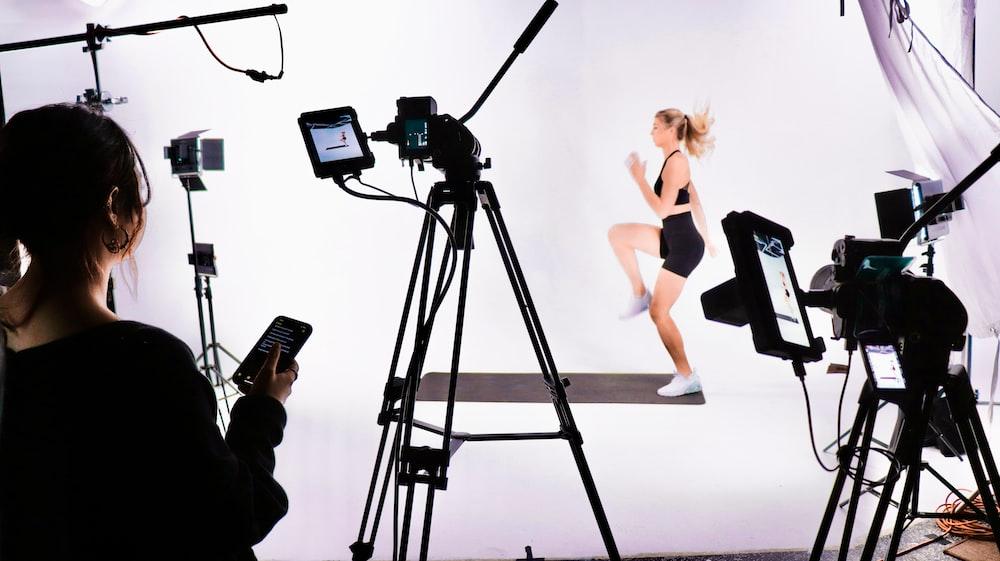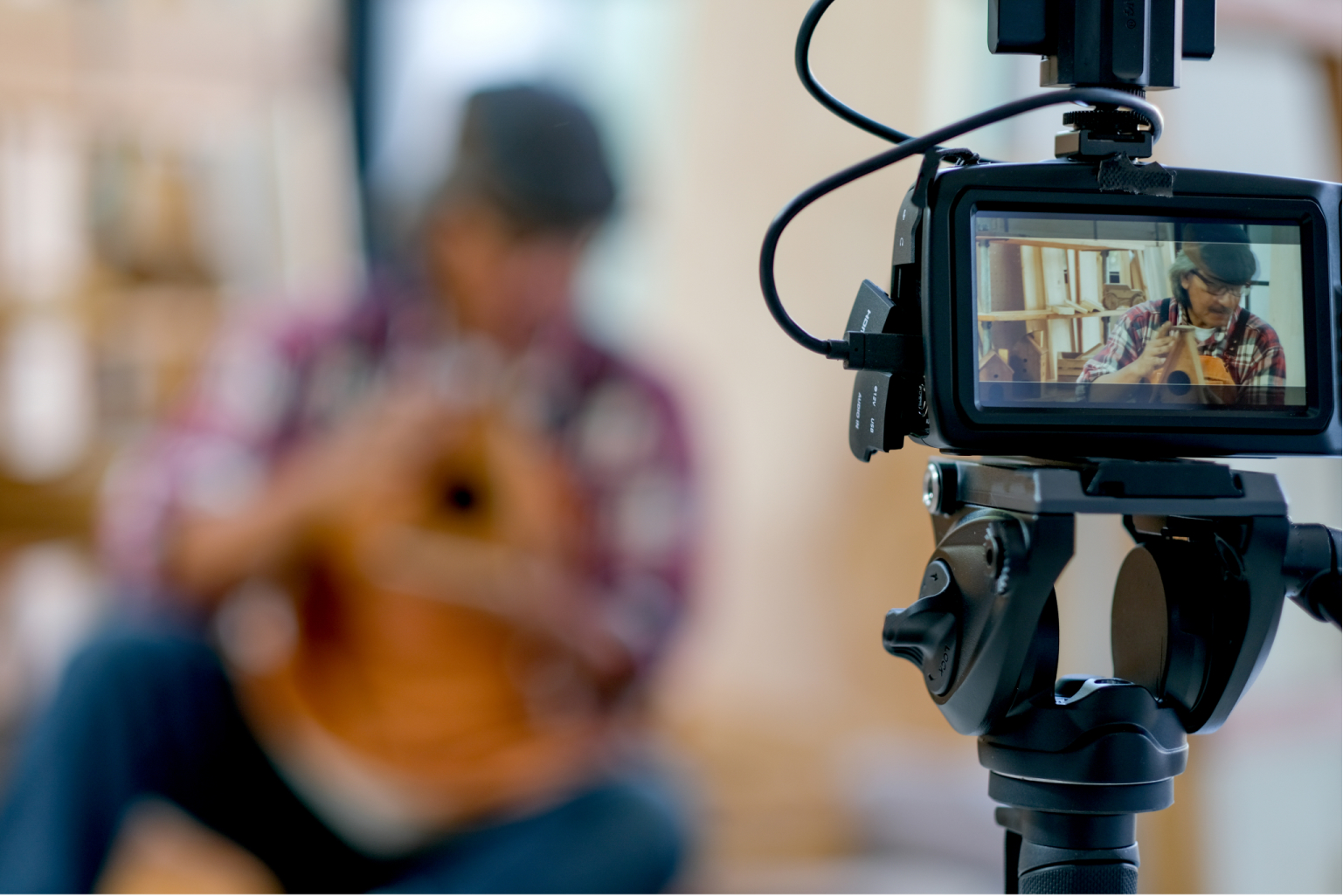The Benefits of an External Camera Monitor
Stockmusic.net team

Filming a movie, commercial, or another type of video is an art form that requires strict attention to detail. Unfortunately, small and poorly lit camera screens can make this difficult, letting tiny details and errors slip right by you unnoticed.
Investing in an external camera monitor can simplify your job, making it easier for people in front of and behind the camera to review footage, adjust lighting, watch for continuity, and more. Read on to learn about external camera screens and how they can benefit your next production.
What Is an External Camera Monitor?
An external camera monitor is a screen that connects to your camera to show high-quality, real-time footage. These monitors can be attached to the camera or stand on their own. They’re especially useful for productions with several crew members, perfecting shots down to the most minute details, and replaying footage that everyone can watch. Almost everyone can benefit from an external monitor, from the actor reviewing their performance to the audio department figuring out where to hold the boom microphone.
Nicknamed “video village” in the film industry, external camera screens are typically made up of professional monitor kits, complete with universal camera connections and light-blocking flaps. However, video village setups can use almost any TV or computer monitor if you’re creative enough – though the image may lag or lose quality if you don’t use advanced monitors that meet your camera’s needs.

6 Benefits of External Camera Monitors
Investing in the best external monitor for your video camera will help more than your camera department. Actors, editors, clients, and almost everyone else on set will find some benefit from a high-quality video village setup.
Stellar Image Quality and Screen Resolution
A bright screen with high-quality and real-time resolution will make it easier to spot everything within the camera frame. Small details that may only appear as pixels on your DSLR screen should be more apparent on your external video camera monitor, letting the crew recognize errors, out-of-focus areas, and any film gear that may be in-frame. Lower-quality external monitors often have delays and poor image quality, so it’s critical you only invest in advanced monitors for your video village setup.
Larger Screen Makes Visualization and Focusing Easier
The small screens of cameras can make it challenging to see every detail being captured, especially if the screen is already cluttered with framing guides, waveforms, frame rate details, aspect ratio, and other camera controls. An external camera monitor allows more eyes to be on the shot at once so people can quickly look for details, errors, and framing without requiring the person behind the camera to move.
This is especially useful for racking focus if you have an external focus tool. Now, the person in charge of keeping the subject in focus doesn’t have to stand anywhere near the camera and has a much larger screen to look at for precision.
Makes It Easier To Shoot in Outdoor Settings
DSLR and mirrorless cameras’ internal monitors are generally poorly lit, making them difficult to see when shooting outdoors or in direct sun. Adjusting screen brightness for your DSLR camera external monitor will make it easier to see all the details you need without pressing your eyes to the camera viewfinder.
Many video village monitors also include extendable flaps to block out sunlight, which keeps the image from being distorted or desaturated. Additionally, using false color or inverse color settings on the external screen can make viewing exceptionally bright parts of the screen during daylight easier.
Easily Make Use of a Wide Range of Tools for Color Analysis, Exposure, and More
Camera settings like inverse color, false color, image flipping, and red, green, and blue wavelengths (RGB) help you strategize the color and lighting of your shots. This ensures the raw footage you capture is usable and, when done right, saves you time color correcting in post-production.
For most production shoots, the person behind the camera won’t be in charge of color correction. So, using a separate external camera screen allows as many parties to see the shot and give notes as needed. Doing color and exposure analyses on your external screen will also help the gaffer, director, art department, script supervisor, and more.
Gives You the Freedom To Move Around as Much as You Need to Get the Shot
Sometimes, cameras must be moved to unique positions to get that perfect shot. These positions can be uncomfortable for the person behind the camera and even block the camera’s monitor and viewfinder. Without another way to view the screen, the camera department may have to cross their fingers and hope the shot is in focus or risk repeatedly redoing the scene.
Using an external camera monitor ensures everyone can see what’s on-screen, no matter where the camera is positioned. This also ensures the video village team doesn’t have to move around every time the camera moves.
Allows Clients and Crew To Check the Footage in Real-Time
Film and video shoots are undeniably time-consuming. Using an external monitor can help reduce the time spent on set – specifically, the time spent rewatching footage. Constantly replaying footage can quickly drain your camera’s battery life and create other obstacles on set.
For many shots, the footage must be reviewed by the camera department, director, art department, script supervisor, and others. If you’re doing a virtual video production, the VFX team will also need to be heavily involved. By having an external screen that plays footage in real-time, no one will have to look over anyone’s shoulder or constantly hit replay to see what’s happening in the frame. This will save time, energy, and battery power.
Do You Have All the Tools You Need for Success?
The craft of making videos combines the artistry of both images and audio. An external camera monitor will help ensure image quality is up to your standards, saving you time during post-production, but what about audio quality?
Using royalty-free stock music and sound effects will keep your videos audibly exciting and memorable. Music and sounds can also help cover up any poor audio quality, such as the whirring of a camera or choppy transitions. View our vast collection of royalty-free sounds to see how StockMusic.net can enhance your next video.